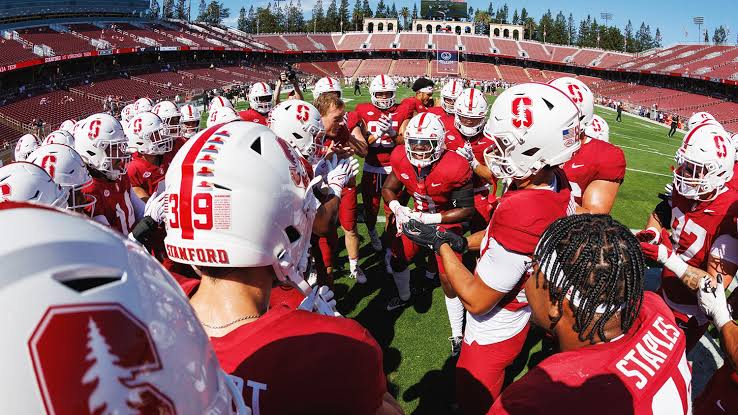
Stanford Cardinal Football: A Bold Overhaul to Strengthen the Team for the Future
The Stanford Cardinal football program is at a pivotal moment in its storied history. Following its transition to the Atlantic Coast Conference (ACC), the team has found itself facing a heightened level of competition, necessitating a comprehensive overhaul. Under head coach Troy Taylor, Stanford is seeking to revitalize its roster through aggressive recruiting efforts, tactical adjustments, and a renewed focus on player development. This bold strategy aims to transform the Cardinal into a formidable force in college football once again.
The Challenges of Transitioning to the ACC
Stanford’s move from the Pac-12 to the ACC has been both an opportunity and a challenge. While the new conference provides increased visibility and access to East Coast recruits, it also pits Stanford against some of the most competitive programs in college football, including Clemson, Florida State, and North Carolina.
The Cardinal entered the ACC era with a rebuilding mindset, facing a significant talent gap compared to their new rivals. This gap has been evident in their current struggles, with the team unable to consistently compete at a high level. To bridge this divide, Stanford has embarked on an ambitious plan to revamp its roster.
Expanding the Recruiting Net
One of the cornerstones of Stanford’s overhaul is an aggressive approach to recruiting. Historically, the program has relied heavily on West Coast talent, but the ACC affiliation has allowed Stanford to broaden its recruiting reach to the Southeast and Midwest. This expanded footprint enables the Cardinal to compete for highly touted recruits who might not have previously considered Stanford due to its geographic limitations.
The coaching staff has already made waves in recruiting, securing commitments from several promising players. Among them is four-star EDGE Gabe Kaminski, a dynamic defensive prospect for the 2025 class. The Cardinal are also in contention for five-star offensive tackle Josh Petty, who has included Stanford in his list of official visits  . These efforts signal a clear intent to elevate the team’s talent level to match ACC standards.
Balancing Athletic Excellence and Academic Prestige
Stanford’s recruiting efforts are unique in that they must strike a balance between athletic potential and academic rigor. The university’s reputation as a world-class academic institution remains a significant selling point for recruits and their families. However, it also imposes additional challenges, as not all top-tier athletes meet Stanford’s stringent academic requirements.
To address this, the coaching staff has refined its recruiting pitch, emphasizing the long-term value of a Stanford education. This approach has resonated with “high-character” athletes who prioritize both their athletic and academic futures. By targeting players who align with Stanford’s values, the program hopes to build a roster that is not only talented but also cohesive and resilient.
Tactical Adjustments for Competitive Edge
In addition to recruiting, Stanford is making tactical adjustments to better compete in the ACC. Coach Taylor has emphasized versatility, seeking players who can adapt to multiple roles and schemes. This approach is particularly evident on the offensive side of the ball, where the team is transitioning to a more dynamic, fast-paced system designed to exploit mismatches and create scoring opportunities.
Defensively, the Cardinal are focusing on strengthening their front seven, a critical area in the ACC, where powerful rushing attacks are common. The addition of players like Kaminski reflects this emphasis on physicality and athleticism in the trenches.
Investing in Development and Facilities
Stanford’s overhaul extends beyond the field, with significant investments in player development and infrastructure. The athletics department has introduced state-of-the-art training facilities and cutting-edge sports science programs to optimize athlete performance. These initiatives include advanced injury prevention protocols, nutrition plans, and personalized training regimens tailored to each player’s needs.
These investments are designed to not only attract recruits but also ensure that current players reach their full potential. By fostering an environment of excellence, Stanford aims to create a culture that breeds success both on and off the field.
The Long Road to Success
While the Cardinal’s overhaul is ambitious, it is also a long-term project. Building a competitive roster, implementing new tactics, and fostering a winning culture take time. Fans and stakeholders must exercise patience as the program navigates this transformative period.
The early signs are promising, with recruiting momentum building and a clear vision taking shape under Coach Taylor’s leadership. However, the road ahead is not without challenges. Stanford must contend with the immediate pressures of competing in the ACC while laying the groundwork for sustained success.
Conclusion: A Program on the Rise?
Stanford’s decision to undertake a complete overhaul reflects the program’s commitment to reclaiming its place among college football’s elite. By targeting top recruits, making tactical adjustments, and investing in development, the Cardinal are positioning themselves for a brighter future.
As the team continues its journey in the ACC, the success of these efforts will ultimately determine Stanford’s ability to compete at the highest level. For now, the Cardinal have set their sights on a bold and ambitious path—one that could redefine the program for years to come.




